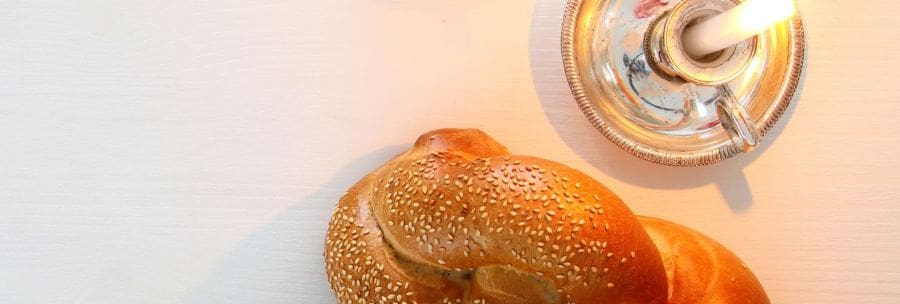
What DO We Do on the Sabbath?
What does keeping the Sabbath look like? The fourth commandment is clear, and numerous other places throughout the Bible make it evident that God finds observation of the Sabbath something all His people should do. Keeping the Sabbath means, in part, refraining from work on that day. We are to refrain from our vocation as well as other work.
“Remember the sabbath day, to keep it holy. Six days you shall labor and do all your work, but the seventh day is a sabbath of the Lord your God; in it you shall not do any work, you or your son or your daughter, your male or your female servant or your cattle or your sojourner who stays with you. For in six days the Lord made the heavens and the earth, the sea and all that is in them, and rested on the seventh day; therefore the Lord blessed the sabbath day and made it holy.”
Exodus 20:8-11, (NASB)
What we’re not supposed to do on the Sabbath is clear, but what isn’t exactly clear is what we DO on that day. When we don’t work, do we just lay around and watch TV all day? Should we take a vacation? Run errands? Go to church?
There are several places we can look to find these answers. We can read the Bible and determine what Sabbath observance should look like. For practical application, we can learn from Orthodox Jews, who have been observing the Sabbath since Old Testament times. Learning from both leads to a more solid understanding of many Biblical customs, and the Sabbath is one of them.
What does a Jewish Sabbath look like?
They observe the Sabbath on Saturday.
When God commands that the Sabbath should occur on the seventh day, the Jews take Him at His word and keep the Sabbath to the seventh day of the week, Saturday. Jewish days start around sundown, so the Sabbath is from Friday evening to Saturday evening.
They rest.
They take the command not to work as a declaration of their freedom from slavery, as slaves don’t usually get days off. When God freed them from slavery to the Egyptians, he took them as His people, establishing His covenant with them. The sign of this covenant is the Sabbath (Ex. 31:16 and Lev. 24:8).
They attend synagogue services.
They attend services as a family on either Friday evening or Saturday morning, or both.
They study God’s word.
The Torah is read during Friday evening and Saturday morning services. Orthodox Jews also study Torah as a family on Friday evenings and Saturday afternoons.
They spend time with family.
The Sabbath is a leisurely affair, with taking walks, playing games, and hanging out together making up much of the day. They have meals together, with blessings for the food, the Sabbath, and each other.
There’s a definite beginning and end.
They light two candles when it begins, indicating that the family should remember and observe the Sabbath. A small ceremony called Havdalah marks its end, separating it from the other days of the week.
What the Sabbath Looks Like at My House
My family has adopted many of these customs to our Sabbath. When we first began, it wasn’t easy to implement. Not working on Saturdays was difficult, but once I figured it out, having a day of free time was a welcome change! We gradually changed our focus to fill our Sabbath with bible study, family time, and rest.
Keeping the Sabbath has been such a blessing to my family. Our culture is nonstop. While this allows us to be very productive, many American Christians struggle to find time for what they claim are the most important aspects of their lives—their family and faith. True Sabbath observation helps properly align our priorities. When done correctly, the Sabbath becomes a day in one’s schedule where the top priorities stay on top—every week, every year, for generations.
Here are a few things my family does on the Sabbath:
- Bible study (individual and as a family)
- Attend synagogue
- Watch live streams from Beth Yeshua International or Founded in Truth Ministries
- Have special meals together
- Light candles to mark the beginning of the Sabbath
- Say specific blessings like this one, this one, and this one, which is my favorite!
- Eat challah bread
- Take naps
- Sleep in
- Hike or take a walk in nature
- Go swimming
- Eat simple snacks and meals that we prepared in advance
- Have a family outing, such as going to the zoo or botanical gardens
- Wish each other and others a “Shabbat Shalom!” or peaceful Sabbath
Our Friday evenings are getting more organized as Sabbath observation becomes routine. Each family member has specific roles on the Sabbath and looks forward to participating.
Shabbat Prep
Although we have activities and school that day, Friday is Preparation Day. We spend most of the day preparing for the Sabbath (Shabbat in Hebrew), the day’s focus. Without Preparation Day, preparing everything for a peaceful Sabbath is tough.
Each child (over 5) receives a Shabbat Prep Checklist on Friday morning. Their schoolwork, daily activities, and the chores they’re responsible for are on it. They have chores such as cleaning their rooms, selecting clothes for the next day, showering, and cleaning bathrooms. Doing these things on Friday allows for an evening and the following day, free to relax and enjoy family time.
My Shabbat Prep Checklist includes making meals for that evening and the next day, making challah bread, laying out clothing for the younger children and myself, cleaning the house, finishing laundry, and other tasks. I also ensure the table is set for our Sabbath meal and the necessary items are out (candles, candleholders, challah cover, decorative platters, etc.).
Here are the type of candles we usually use and a pretty cover for the challah bread similar to the one below.
Welcoming the Sabbath
We light our Sabbath candles and say blessings around dinnertime. Usually, this is done just after sunset at the start of the Sabbath, a job commonly reserved for the woman of the house. My oldest daughter says the prayer after I light the candles. She covers her head with a headscarf to say the blessing, which is a sign of respect for God.
Click here for a Step-by-Step guide to welcoming the Sabbath!
After the blessing over the candles, my husband blesses the children and me. The blessings are our favorite part of the Sabbath! My kids wait expectantly for their turn to be blessed. It’s touching when my husband says Proverbs 31, a blessing over me. There’s so much value in my kids watching him do this week after week! You can find out more about the blessings here and here.
After this, my husband says a prayer, and we eat. My husband usually has a subject to discuss related to the Sabbath, that week’s parsha, or just life in general. I try to choose a family favorite for the Friday evening meal to avoid any struggles over the little ones eating their dinner! Afterward, we always watch a movie as a family, complete with popcorn.
During the Day
On Saturday mornings, we either attend our Messianic Jewish Synagogue or do something recreational as a family. Saturday mornings are usually slower than mornings of other days, allowing time for bible study and rest. The Sabbath afternoon is often more leisurely than others, with naps and more study time being common activities.
We have an evening meal, then clean up after our restful day. We even include a Havdalah ceremony to mark the end of our Sabbaths.
Although our Sabbaths are free of work, we have plenty to do on Saturdays – the most important things! With the week’s work out of the way, we fill the day with much-needed rest, study of God’s word, and family time. What used to be an extra workday or a day to catch up on chores and household projects has become our most treasured day of the week. The best part is that keeping the Sabbath shows we’re in a covenant with the God of the universe, and we’re His people! What a marvelous blessing!
Comments (27)
Leave a Reply Cancel reply
Search
Recent Comments
- Patricia Boone on How to Find a Hebraic Congregation
- Holy Branches on The Hebrew Calendar Explained
- lachumba on The Hebrew Calendar Explained
- Richard Close on Is the Sabbath Really THAT Important to God?
- Yah Behna Behna Yisrael (Govt name) WARREN PARKS on How to Find a Hebraic Congregation
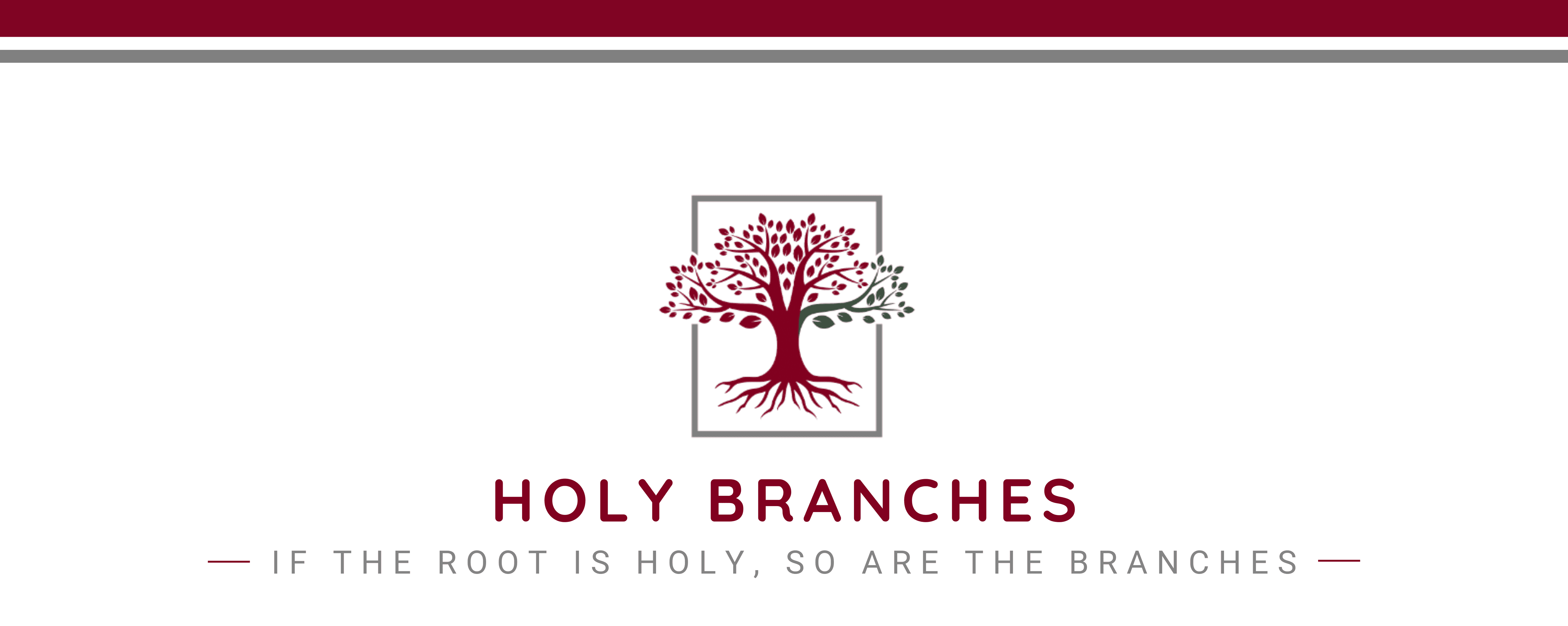

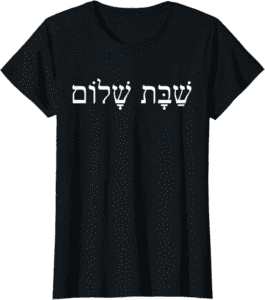

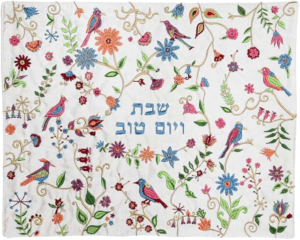
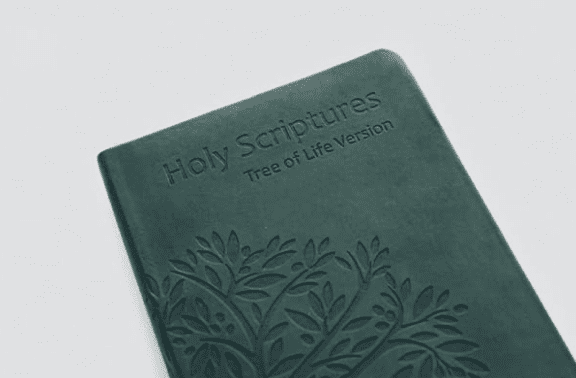
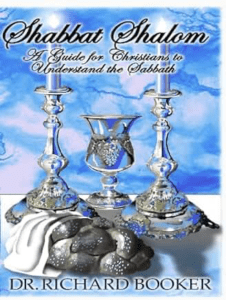
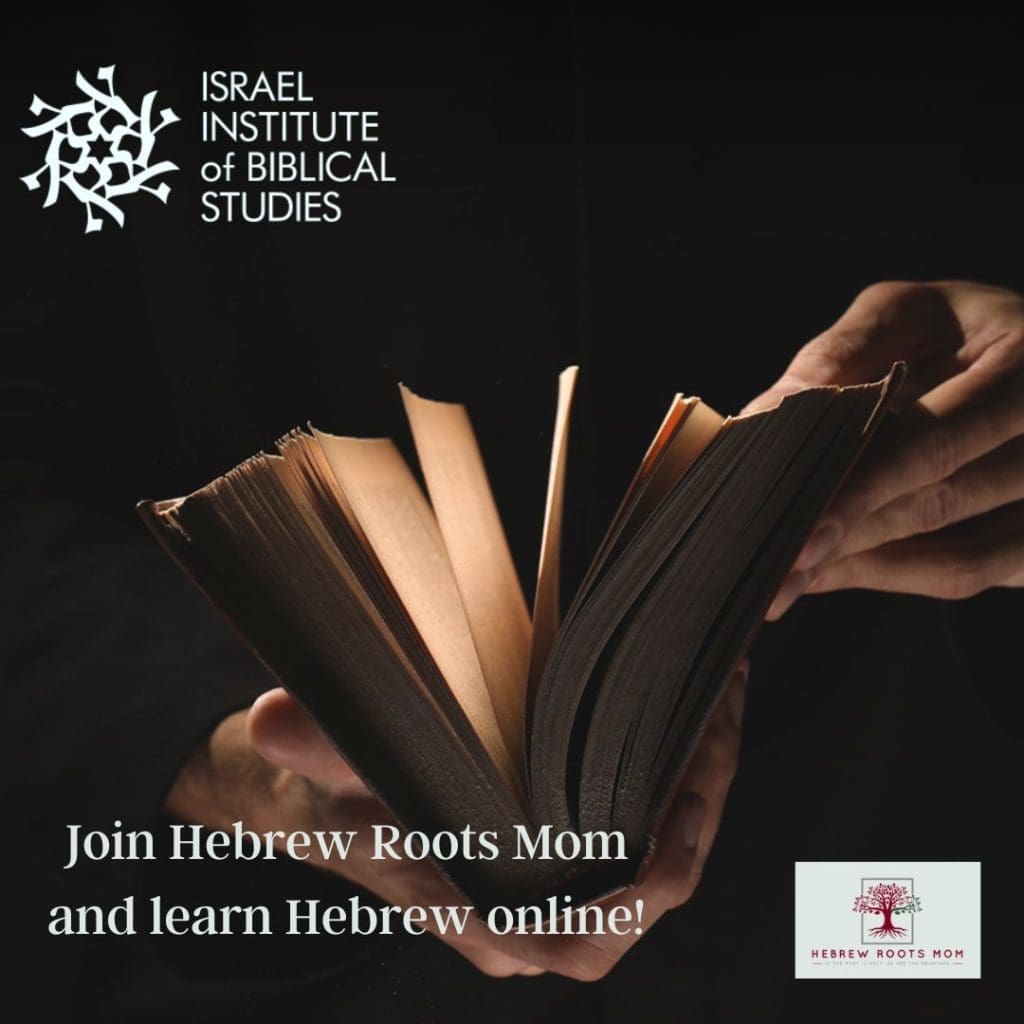
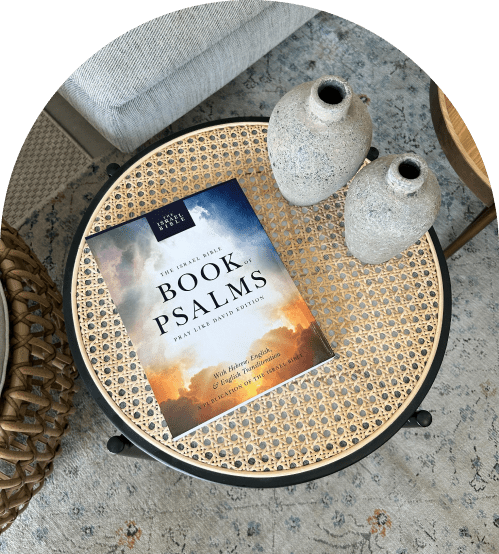
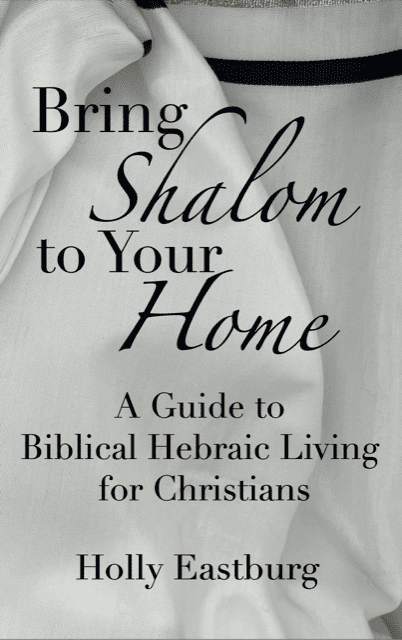
Thank you for this!
Sabbath was established at creation as a memorial to God and His creative power. It is a sign between Him and His people and it will be the end time seal of His people. It is a delight and joy and to spend time in nature, His handiwork, and doing what Jesus did is rewarding and a blessing! Shabbat Shalom and may you grow closer to Christ in your Sabbath mediation.
It was nice to find your site! My name is Marie and l am Jewish and also Gentile l have been following the Hebrew roots for about 17 years and my problem is… l have 6 children although they are believers they do not keep Sabbath which creates a problem for me. As l try to keep the Seventh day Holy but my kids and grandkids constantly have family events that they want my husband and l to attend…l love my family and love all the great life cycle get togethers l feel torn by honoring Yahweh and being with my family… also family vacations usual includes a full Friday to Monday time frame… this is my dilemma?
I would like to tell that I feel the same thing, I am going through a similar problem, I am 18 year old Christian girl and my family has been keeping the Shabbat for all my life, however as I became older I started to study the Bible by myself and discovered that our way of keeping this holy day was completely wrong, we were just not working or studying but the essence of shabbat was not really present, my relatives always get together on saturdays to have lunch and not all of them keep the Shabbat so we often discuss inappropriate subjects for shabbat talking about work or anything like that, and there’s no preparing the food in advance so my grandmother ends up cooking all shabbat morning, I very frustrated but I don’t know how to change this cycle that happens every week ????
Shalom, I just found your website and have enjoyed what you share here. But I don’t understand something that I’ve just been reading in my Isaiah Bible Study: might you be able to provide interpretation of Isaiah 58:13? What does the term ‘do not follow your own pleasure’ mean? Thank you so much.
The way I interpret this verse is that our activities on the Sabbath should be to glorify God and bring Him pleasure, not ourselves. It’s not saying that we aren’t allowed to enjoy ourselves on the Sabbath. Those of us who love our jobs would be perfectly happy working all day Saturday and that would bring us pleasure. There is no command to not have pleasure on the Sabbath in the Torah (which is where the commandments are). This verse is from Isaiah, a prophet, so, while this prophecy will agree with the Torah, it’s not a commandment. Here’s a video that answers this question very clearly and thoroughly: https://youtu.be/MHSdjX735qk
Holly, I also worship on Sabbath, but I am not sure what I can’t do on Sabbath. Am I allowed to crochet or is that not allowed? Please let me know. Thank you.
What one can or cannot do on the Sabbath isn’t specifically defined Biblically. This leads to many different interpretations of what keeping the Sabbath looks like. I choose not to do activities that are my vocation on the Sabbath. I love to crochet but no one would ever pay me for my creations (I’m not that great at it!) and I don’t sell them so I, personally, wouldn’t avoid it on the Sabbath. Ultimately, what’s right for you to do or not do on the Sabbath is between you and God. Ask Him and make sure your heart is open to His answer.
Shalom!
Hi, I enjoyed reading info about Shabbat. I’ve been keeping for 3 years now but I am lonely as well. My husband does not keep sabbath with me. It is really hard. Besides praying for my husband and son do you have ideas that may draw them closer. I’ve gotten my husband to read the Bible with me but he hates every minute of it even though he claims to be a believer. I have read the other comments and just love some of the things parents do for their children and husbands do for their wife’s. Maybe is there a blessing I can pray over my husband? I cannot force him but I just want him to know the blessings that come with keeping YHWH commandments and I want the blessing that comes from hearing my husband want to bless me. I hope this isn’t selfish. Thank you
Hello, Charlotte!
I understand the difficulty in having a spouse that doesn’t practice a Hebraic faith. It’s hard to have peace in that situation. Believe it or not, this is one of the most common questions I get!
To answer this question, I give the same advice I would give one who’s married to a non-Christian. This situation is similar to what’s going on in this verse:
But to the rest I say, not the Lord, that if any brother has a wife who is an unbeliever, and she consents to live with him, he must not divorce her. And a woman who has an unbelieving husband, and he consents to live with her, she must not send her husband away. For the unbelieving husband is sanctified through his wife, and the unbelieving wife is sanctified through her believing husband; for otherwise your children are unclean, but now they are holy. Yet if the unbelieving one leaves, let him leave; the brother or the sister is not under bondage in such cases, but God has called us to peace. For how do you know, O wife, whether you will save your husband? Or how do you know, O husband, whether you will save your wife? 1 Corinthians 7:12-15
This says that you have a profound effect on the faith of those in your household. There’s another verse that even tells us how to do this:
In the same way, you wives, be submissive to your own husbands so that even if any of them are disobedient to the word, they may be won without a word by the behavior of their wives, as they observe your chaste and respectful behavior. 1 Peter 3:1-2
A spouse shouldn’t be forced to walk the same spiritual path you’re on. Live out what you believe and allow the Spirit time to bring your spouse to that place if that’s God’s plan for him or her.
But what do we do with the details? When one spouse doesn’t agree, what does Friday night look like in your home? How about Passover? What church do you go to? What diet is followed at your table?
The answer to these questions is the same as the answer to so many in marriage. Approach all of them with grace and love and abandon any pride in yourself you make take into the conversation. Broach these subjects at a time when there is no stress, when you both are in a good mood, never during an argument or when there’s tension. No major subjects should be discussed under those conditions and this is not an exception to that.
Many things can be pursued on your own and won’t require your spouse to do them along with you, like studying the Torah, studying Biblical Hebrew, and maybe even keeping a Biblical diet. Focus more on what’s between you and God as far as these changes in your faith go and less on what’s between you and your spouse. God knows the differences between the two of you and He will see your willingness to obey Him and will honor that, even if your spouse chooses not to join you in it.
I pray for unity and peace in your home,
Holly
This has been a very interesting read, Shabbat, clearly explained, always wondered what other ways to keep it, thank you
You’re very welcome. I’m so glad to hear it was helpful!
Hello to all true believers in Yahshuah! Since I am following the shabbat day, I am still looking for an answer if I can do running on this day? For me running is a time when I am deeply connected to our Lord…I was searching for answers, but could not find really….so I decided one day of shabbat to run instead of my usual Sunday running session, after 2 Saturdays sessions, I woke up one morning with huge pain in my ankle all with swelling around….is this my answer? I don’t know…help me Lord
Hello! First of all, I think it’s wonderful that you’re focused on trying to figure out what God desires from you and that you’re observing Shabbat in the first place.
I know some people do not work out on Shabbat but the Bible doesn’t specifically say that so I think we must be careful not to add to what God didn’t say. The Bible is clear that we are to remember the Sabbath, keep it holy, and not work on that day. The only clear thing laid out as “work” is a vocation. So we’re to take the day off from our vocation but what else classifies as work is between you and God. I would pray about this and see what answers you’re led to. Search the Scriptures and see if you find any clarity there also. I hope you find your answer!
My husband is a pastor, and we have 6 daughters. After two years in full time ministry, we are finding that we need to incorporate a true Sabbath as God dictates. Sunday is not Sabbath, it is a work day for both of us. I’m struggling to accept that and rethink my internal calendar. One practicality I can’t quite wrap my head around is meals? How do I avoid work but feed my very hungry very large family? How do we train them with our new vision for our family? And also, are movies/game time/trips actually allowed or would that be wrong?
Hello, Heather!
Your Sundays sound a lot like ours used to be so I think you’ll find a Sabbath to be a huge blessing! Here’s a link to some Sabbath meal solutions:15 Meals to Bring Shalom to Your Shabbat. Think in terms of simple and/or make-ahead meals.
As far as training them with your new vision, I would be open with them as to why you’re doing this. Pray about it and discuss with your husband what will be permitted on that day. The Bible isn’t very specific so you need to choose what you think will ensure your family has plenty of time to focus on God and spend together. This is different for every family and that’s OK. My family has a movie night on Friday evening, then doesn’t do any electronic entertainment until Saturday evening. We found that allowing TV and video games just made everyone focus inward instead of be together focusing on what we should have been. We do allow board games and similar activities. Whether or not to take trips on that day is also up to you. Some see this as a violation of the Sabbath while others see it as quality time together.
Other ways to train your kids to remember the Sabbath is to ask them (after explaining your vision) what they think they should do on that day. Incorporate some of their ideas in your Sabbath as well. I also try to make the day special for our kids. Their favorite festive meals, snacks, one-on-one time with Mom, etc. will help set the Sabbath apart in their lives as well.
Blessings to you and your family in your new Sabbath endeavor!
Do you really go to things such as maybe “botanical gardens” or “zoos” or go swimming on the sabbath?
Does it not say in Isaiah 58:13 “If thou turn away thy foot from the sabbath, from doing thy pleasure on my holy day; and call the sabbath a delight, the holy of the LORD, honourable; and shalt honour him, not doing thine own ways, nor finding thine own pleasure, nor speaking thine own words:…” We should never stop learning to live according to how He wants us to! Shabbat Shalom!
Hello. I am Christian in my faith and a young one at that. I have a very stressful and emotional job that takes its toll. I recently found out that I have Jewish lineage via DNA. I have so many questions as I am Southern Baptist. Can I practice Shabbat? I’m single and have no children. There are almost no Synagogues here as I live in a rural small town. How would I observe this ?
Hello, Patrinka!
Congratulations on your Jewish DNA! Ways to observe Shabbat are in this post we’re commenting on. Another post that will answer your other questions is: https://holybranches.com/is-the-sabbath-really-that-important-to-god/
I’m sure the burden of your job weighs on you. I think you’ll find keeping Shabbat a huge blessing in your life!
Shalom to you!
The search for rest…I have, to increasing degrees, found that it is God’s perfect will to observe a 7th day sabbath, and it is very nice to have your page here where you share your experiences and understanding…thank-you…
But my quest is a quest for rest…I can not work on the sabbath, but my heart is not at rest…I fret…I cannot help it…it is like…ok…I am resting but I am thinking of all the things I can’t do…and I am lonely, which is very hard…often it takes me a day of rest to recover from my day of rest…how to be at peace?…how to make the sabbath do what I believe it is supposed to do – be a rest for the soul?
Hi, Craig! I can totally relate to spending your Sabbath thinking of all the things you can’t do. That’s how I spent many of my Sabbaths when I was first convicted to keep them. It took some practice to fill my Sabbath with the things it’s supposed to be full of, which is why I wrote this post. I wanted to help those in the very position you speak of.
Loneliness is a problem on the Sabbath, but it’s a problem for so many in all areas of life right now. We weren’t created to do life alone. I’m sorry to hear you’re struggling with this. I have a couple recommendations that may help.
First, make sure you’re deeply rooted in God’s Word. Taking a Sabbath allows for the in-depth Bible study so many lack. Deeper Bible study leads to a more fulfilling relationship with our Creator. If you’re looking for a wonderful in-depth Bible study, I highly recommend Tom Bradford at Torah Class.
Secondly, seek out a Sabbath-keeping community. This may be difficult as many are not meeting right now, but at least join them online or wherever you can. Here are some places to search for a community in your area:
https://answersintorah.wordpress.com/messianic-jewish-congregations-directory/
https://www.119ministries.com/resources/fellowship-finder/
https://www.umjc.org/congregations
In the event you cannot find a community near you, there are a few synagogues that live-stream or record their services/teachings and, while not nearly as good as in-person services, may be a good place to start as far as participating in Sabbath services.
Founded In Truth: https://foundedintruth.com/live/
Beth Yeshua International: https://livestream.com/accounts/11705807
Hebraic Roots Network: https://www.hebraicrootsnetwork.com
119 Ministries: https://www.119ministries.com
Hellooo! So fun to find a christian mom who loves the jewish roots of our faith! My husband and Inhave been in a Torah Club for two years and are just getting into our third. We are finally going to start practicing the sabbath and look forward to every aspect of it. We have two grown boys and have decided to set a place for each at the table, even though they aren’t there, and my husband will bless them in spirit. Can’t wait to see where this is going. We hope to visit Israel very soon…praying and eating our way from one place to the next as we experience God. Blessings & Shalom
That’s exciting, Kari! I love to hear from people growing in their faith on this path. I hope you get to Israel soon and that you and your husband have a wonderful time there. Blessings to you and your family.
Keeping the Sabbath is a new way of life for hubby and I. I guess you could say we had an awakening. We are Christians and have been in many Bible studies and have led them but we had our eyes uncovered watching a video about keeping the 4th Commandment. It was a light bulb. We are learning how to keep the Sabbath, watching the time of sunset on Friday and Saturday, resting, Bible reading and study, simple meals on Saturday and learning about the Sabbath meal on Friday. I just found out also, that I have a Jewish lineage thru DNA. I often wondered why I was interested is Israel, Jewish traditions and history. So we will continue our journey as GD has intended it. We have shared with our grown children and some think we have lost it. Maybe. But I do know that it is what GD wants from us.
Shalom, Melissa! The Sabbath was the light bulb that went on for me too! I love that you’ve responded to the conviction to keep the Sabbath. Congratulations on your Jewish lineage and blessings to you on your new journey!
Hi, I’ve been a Christian for many years, but never really thought about the Jewish custom and keeping the Sabbath day on a Saturday (it’s a Sunday where I’m from). I’ve been drawing closer to the Lord more so since lock down than ever before. I feel drawn to know more about living life as they did through the bible. It’s hard for me as my partner isn’t a Christian neither are my children, even though I brought them up in church. They are teenagers so it’s not’cool’ to believe in God etc. Only prayers will work.
I too want to learn the Hebrew language i did start but there isn’t any good sites on Internet.
Any recommendations will be a blessing
Sue
Shalom, Sue!
I hope you’ve found some resources for learning Hebrew but if not, there are some that I’ve found helpful on my Resources page. Here’s the link: https://holybranches.com/hebrew-language/
I pray for blessings and spiritual growth for you and your family.